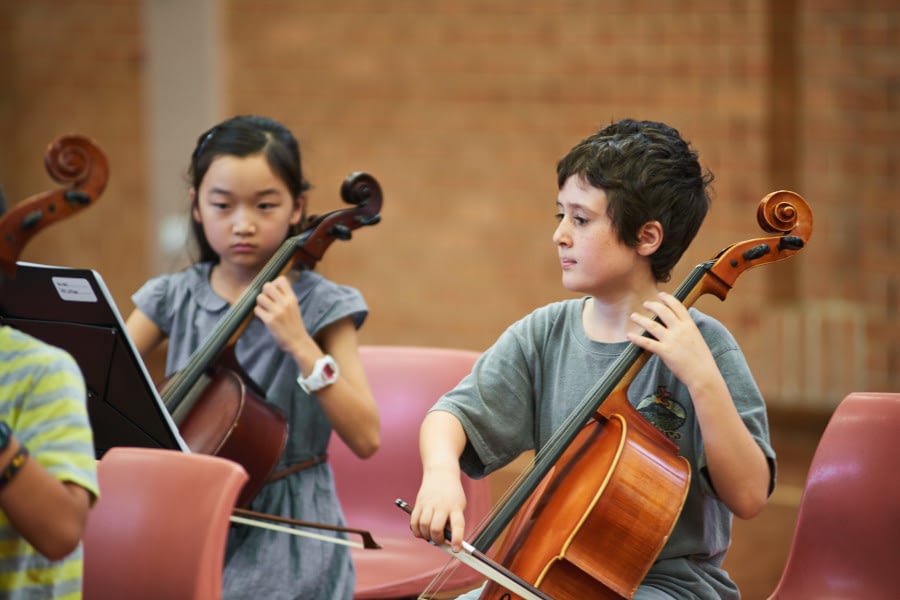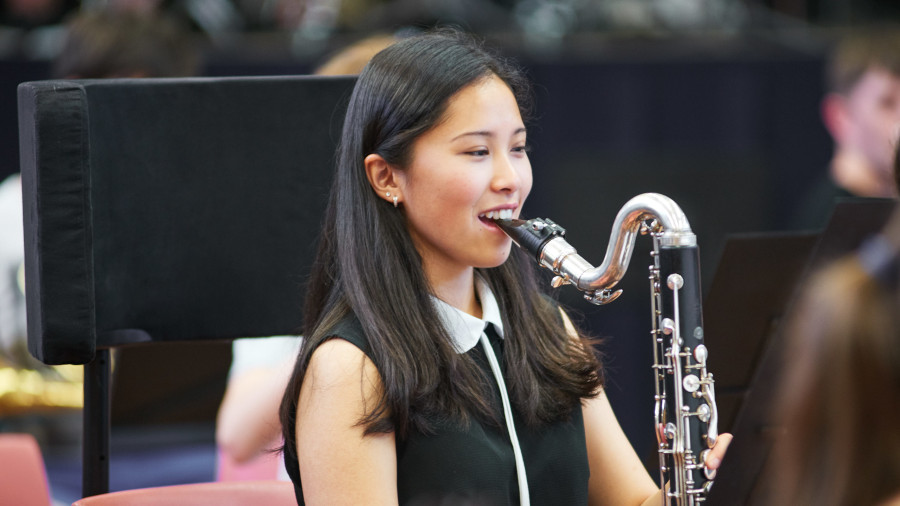All over Australia thousands of school children play in bands and orchestras. Parents and teachers can agree that it’s wonderful to see children involved in musical ensembles. Studies have shown that playing music can improve confidence, promote teamwork and even enhance brain function.
But while children reap the benefits of music-making, they may be exposing themselves inadvertently to the dangers of hearing loss. And this is because far too few schools with music programs factor prevention of noise-induced hearing loss (NIHL) into their health and safety policies.
So, while many schools are doing their best to prevent playground bullying and sporting injuries, why are they also not taking hearing loss seriously among the health risks associated with playing music? Let’s look at some reasons for this and dispel some assumptions about children and hearing loss at the same time.

Children Have a Greater Tolerance for Loud Noise Than Adults
Children tend not to mention pain in their ears or complain about feeling uncomfortable when subjected to loud noises. But this does not mean that they are any less at risk of hearing damage than adults. In fact, studies have shown that children may in fact be more susceptible to the dangers of hearing loss since:
- They may not be experienced or educated enough to recognise dangerous exposures;
- They lack the ability or means to control noise levels in their environment;
- They can expose themselves inadvertently to excessive noise due to exploratory or risk behaviour.
In a band or orchestra, some children may be oblivious to loud noises as they may be focusing on their playing and enjoyment. Or they may simply accept that the volume of the music is normal. The responsibility therefore falls to teachers and parents to ensure that children receive some kind of hearing protection while they participate in such activities.
Children Are Exposed to Dangerous Noise Levels for a Short Period Only (and are Therefore Less at Risk)
It is true that school students who play in bands and orchestras typically spend one to two hours rehearsing. However, many students will also be involved in extra-curricular musical activities along with lessons and individual practice at home. All of this adds to the amount of time they are exposed to noise from musical sources. On top of that is recreational noise such as listening to music on personal music players with earphones or headphones. And let’s also not forget noise pollution in the environment such as traffic and construction sites.
At 85 dB (e.g. busy city traffic, vacuum cleaner, blender, violin practice) the recommended exposure period before hearing damage can occur is 8 hours per day. But the duration halves with each increase of 3 dB so that at 100 dB (e.g. subway train, jackhammer, motorcycle, trumpet practice) the period of safe exposure is only 15 minutes per day! When all this is factored in, it isn’t difficult to imagine that the children can end up being exposed beyond the safety threshold on a daily basis. It makes sense therefore that parents and teachers should do all they can to minimise children’s exposure to dangerous noise levels when they are engaging in specific activities and controllable contexts where levels can readily exceed 85 dB, such as during band or orchestra rehearsals.

Children Don’t Play as Loudly as Adults
Many parents who have attended school events and concerts can attest to the sheer volume that a band consisting of 30 or more children can make! It is perhaps truer to say that children cannot produce a greater range of dynamics in performance – from barely audible pianissimo to triple forte – than a professionally trained adult musician. In fact, most children who begin learning instruments such as brass or woodwind will err on the side of playing too loudly.
Countless studies by audiologists and acousticians comparing the relative volumes of orchestral and band instruments have shown that those sitting consistently at the loud end of the spectrum include the trombone (90–106 dB), trumpet (88–108 dB), flute (102-118 dB) and saxophone (75–110 dB). Keeping in mind that hearing damage can occur when exposed to a noise level above 85 dB, it’s easy to see that children who “overplay” on their instruments can be subjecting themselves and other children to unsafe noise levels.
Children Don’t Like Wearing Earplugs
No one likes to wear earplugs, especially if you’re playing an instrument in a band or orchestra. Most earplug users can attest to the sound of the music in their ears becoming muffled or distorted. The discomfort and inconvenience of wearing earplugs is a trade-off that many professional musicians endure and get used to for the sake of preventing hearing damage. The technology in earplugs has now improved greatly so that companies such as Etymotic are producing high fidelity custom earplugs for musicians which afford noise reduction without sacrificing clarity and balance.
And let’s not forget that earplugs aren’t the only safety measure that schools can implement to regulate noise. Sound barriers and screens such as the Goodear Acoustic Shield (see image below) are a quick and easy way of reducing noise levels to isolated individuals or groups. They also don’t tend to modify the user’s perception of sound around them. Professional orchestras also utilise careful spatial arrangement of players, the acoustical properties of the rehearsal or performance hall, and rostering of players to manage noise exposure. See our article 7 Essential Factors Orchestras Need to Consider in Noise Risk Assessment.

We hope the discussion above will encourage parents and teachers to re-evaluate what they’re currently doing to protect the hearing of children who play in bands and orchestras. To keep up to date with the latest news and information and see which schools and youth orchestras are using the Goodear Acoustic Shield, follow the Goodear Acoustic Shield for Schools Facebook page.

